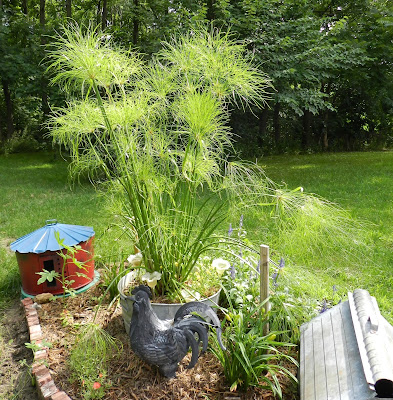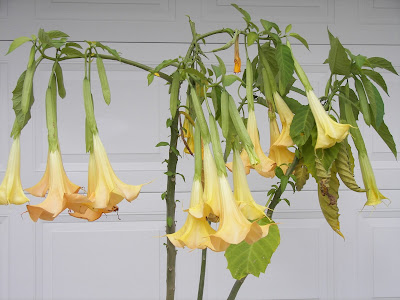Are you all in for Fall? Perhaps a trip to your local orchard for apples, pumpkins, squash and cider?
I made a stop at Arends Orchards, Route 78, Laura, Illinois. Most orchard "pie" apples are good but Arends is my favorite. Plus, the cider is straight from the apples - no processing, preservatives or added sugar.
This morning I decided to make an apple pie. In the last few years, I've been using my 9-inch ceramic quiche baking dish instead of a traditional pie plate. It holds more filling and less chance for it to run over while baking.
Here's the recipe I used this morning from the 1965 Farm Journal's "Complete Pie Cookbook".
APPLE-CHEESE PIE
One two-crust pie - Preheat oven 400 F degrees
INGREDIENTS:
Pastry for a 2-crust pie (either homemade or bought)
5+ cups Apples (tart) - sliced, cored and peeled (have a heaping amount in pie)
1 small Lemon
1/2 C Brown sugar
1/2 C Sugar
1/3 C Flour
1/8 tsp Salt
1 tsp Apple pie spice
1 T Butter
1 1/2 C Sharp Cheddar Cheese - grated (don't use pre-grated)
1 Egg White - lightly whisked
DIRECTIONS:
Position the bottom pie crust into the pan. Pat into shape of pan. Flatten out any pleats. Gently push the edge over the top of the pan edge.
Add 1 T of flour and 2 T of sugar on the bottom crust - evenly spread.
Zest/grate lemon peel into large bowl. Juice the lemon into the bowl.
Add apples and toss to cover in juice. Add brown sugar, the remaining flour, salt, spices and cheese. Toss to evenly cover applies. Pour into pie crust. Arrange to make sure applies are lower around the edges and higher in the middle. This will help keep it from running over while baking. Cut small pieces of butter and arrange over the top.
Dampen the bottom pie edge with just a little warm water, patting it on with your fingers. Evenly lay the top pie crust on top. Tuck under the top edge under the bottom edge and crimp. The combination of the water, folding and crimping should seal the edges. With a sharp knife, cut steam holes. With a pastry brush, lightly cover the edges and top of the pie crust with egg whites. Sprinkle lightly with a little white sugar. Cover the edges with a pie edger or crimped alum. foil. Remove edger/foil when pie starts to get golden.
Bake on middle rack at 400 degrees for 40 minutes (or until apples are tender and crust is golden brown.) Cool or serve warm.
WHY:
The whole apples/cheese thing is German - hardy farm food. Traditionally, a big hunk of cheddar cheese was served along side the apple pie. I rather like it mixed - served warm. I like to tell myself I'm getting a lot of required nutrients.
The point of using "pie" apples is they are usually tart (to balance out the sugar) and they are juicy (making a good filling.)
Apple pie has been voted a Farm Bureau favorite as most farm yards have apple trees and most farmers love apple pie for breakfast, lunch, dinner and an afternoon snack. This particular cookbook has 23 different apple pie recipes.
Both the finished pie or just the pie filling may be frozen.
The good news about pie recipes, is make it once and feel free to tweak it next time. Too sweet, add less sugar. Too tart, add less lemon. Don't have quite enough apples, add another fruit. Too dry, add a bit of milk/cream. Can't eat a whole pie, make two halves and freeze one. Have a few pecans in a bag, add to the mix. No recipe was developed that someone didn't take what they had, what they loved and tried it out.












































